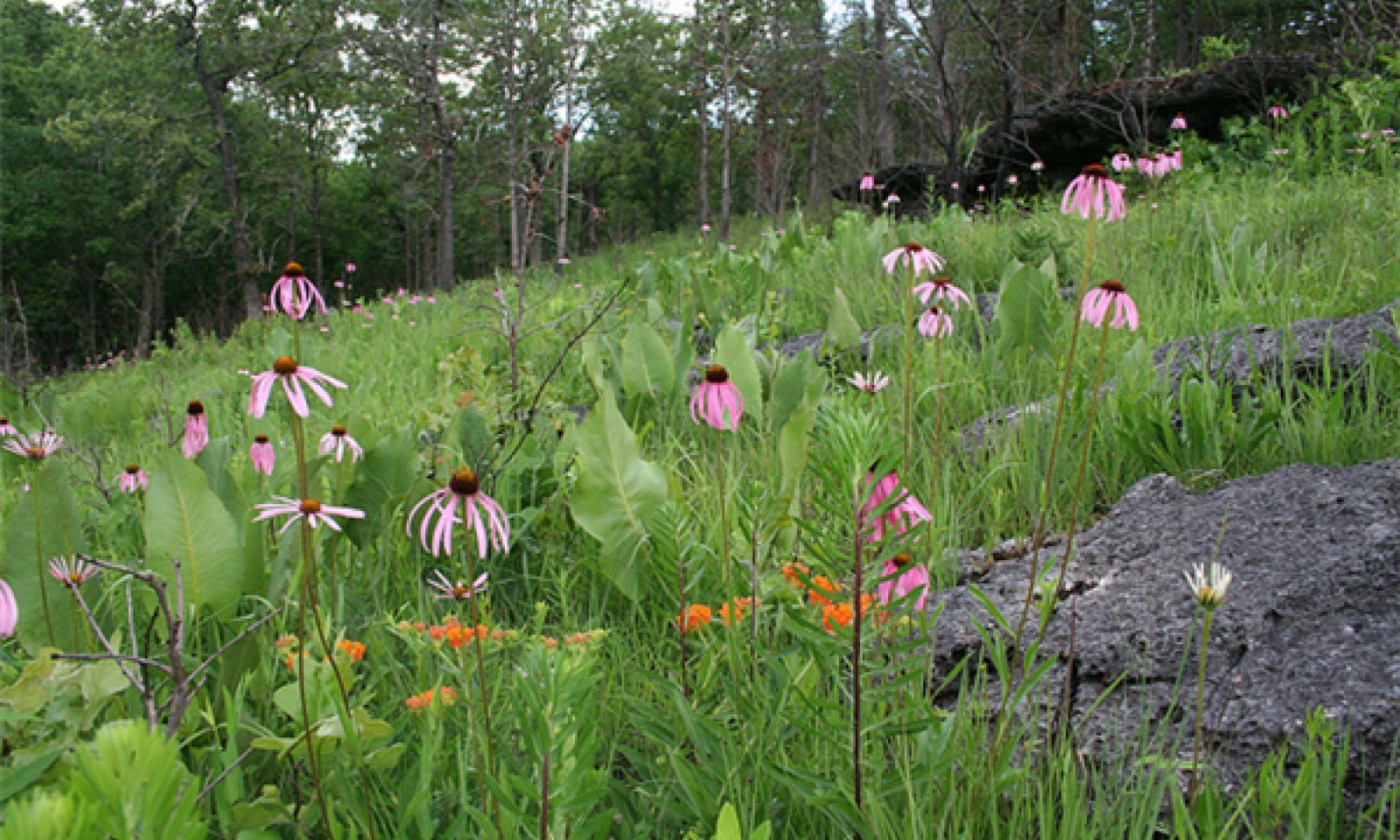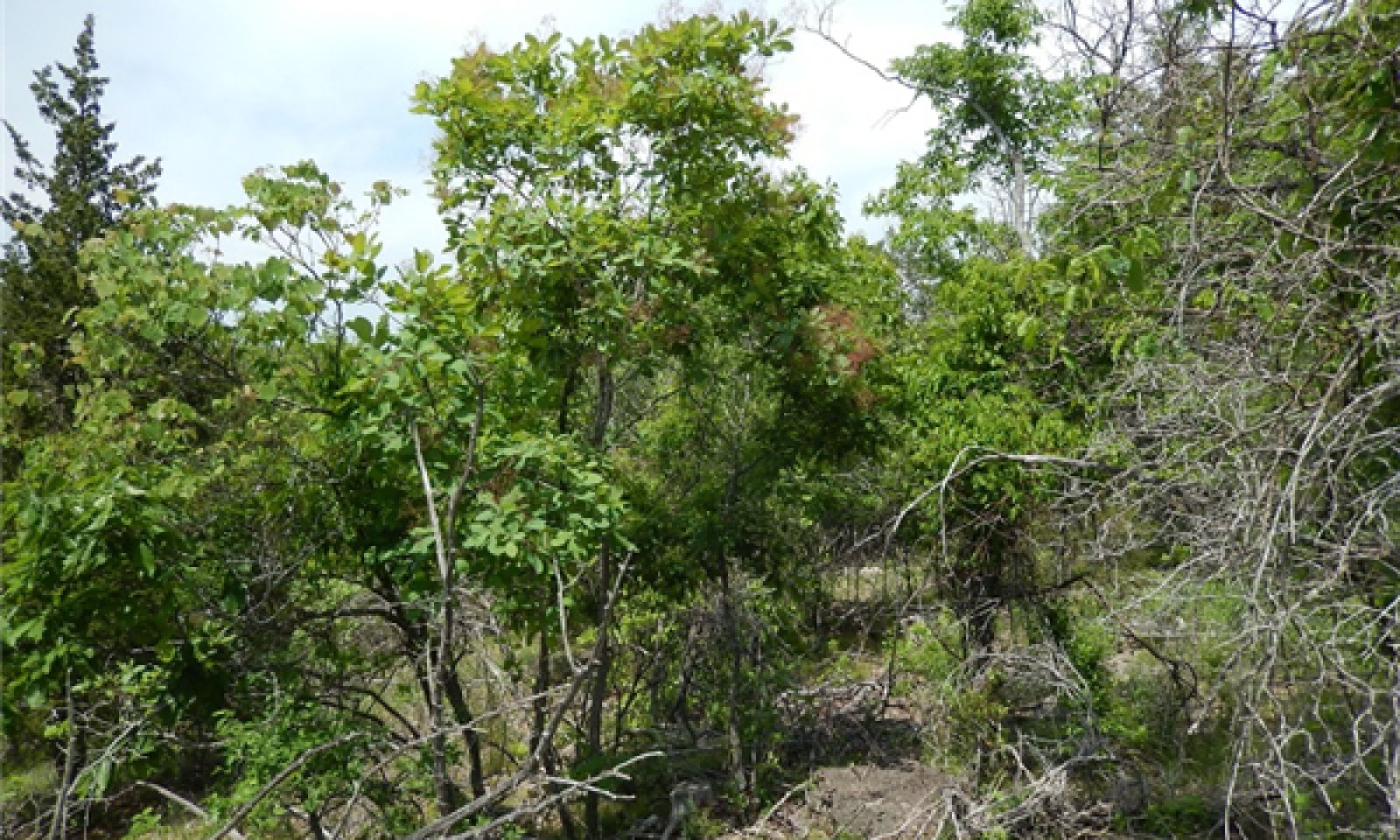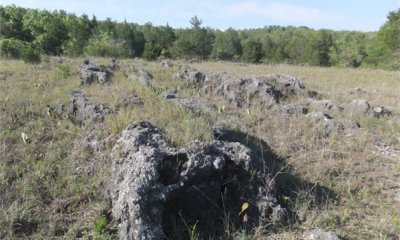
Shallow Dolomite Upland Glade/Woodland
Scenario model
Current ecosystem state
Select a state
Management practices/drivers
Select a transition or restoration pathway
- Transition T1A More details
- Transition T1B More details
- Restoration pathway R2A More details
- Transition T2A More details
- Restoration pathway R3A More details
- Transition T3A More details
-
No transition or restoration pathway between the selected states has been described
Target ecosystem state
Select a state
State 1
Reference




Description
The reference state can be found in scattered locations throughout the Ozark Highlands. The reference state ranges from wide open grassy areas with shallow soils and bare bedrock, to areas with widely scattered chinkapin oak and post oak on locations with soil depths at the deeper extreme of the range for this soil component. On protected slopes and along the outer edges of glades, open woodlands are more common. Here the deeper soil depth range for this soil component and protected aspects allow more woody components to dominate. Periodic disturbances from fire maintained the dominance of drought adapted native grasses and forbs by limiting the growth and dominance of trees, especially eastern redcedar. Long disturbance-free periods allowed an increase in woody species. Two community phases are recognized in this state, with shifts between phases based on fire frequency. With decreasing fire frequency, a shift to Community Phase 1.2 will occur and exhibit an increase in woody densities.
Submodel
State 2
Woody Invaded Glade/Woodland




Description
This state is dominated by eastern redcedar with significant increases of oak density due to extended or permanent periods of fire suppression. This state can form relatively even-age stands, dating to when fire suppression began. Canopy closures can approach 50 to 80 percent with little or no ground flora.
Submodel
Description
Overgrazing can erode the shallow, fragile, original soil layer from glades. This overgrazing will decrease the number and diversity of species and cause changes in the distribution of opportunistic and conservative glade species. Eastern redcedar along with many exotic species such as yellow sweet clover (Melilotus latissimus), tall fescue (Schedonorus arundinaceus), cheat grass (Bromus tectorum) and common teasel (Dipsacus laciniatus) readily invade grazed dolomite glades. Grazing animals also reduce the quality of glade and barrens habitat through soil compaction and the selective removal of plant species essential to the survival of glade insects (Erickson et al. 1942).
Submodel
Mechanism
This gradual transition results from prolonged periods of fire suppression, generally over 20 years.
Relevant conservation practices
| Practice | External resources |
|---|---|
|
Brush Management |
|
|
Prescribed Burning |
Mechanism
This transition results from persistent cattle grazing accompanied by fire suppression.
Mechanism
Restoration requires cutting most of the invading woody species such as eastern redcedar, accompanied by prescribed fire on a continued basis.
Relevant conservation practices
| Practice | External resources |
|---|---|
|
Brush Management |
|
|
Prescribed Burning |
Mechanism
This transition results from long periods of uncontrolled domestic livestock grazing.
Mechanism
Restoration requires exclusion of livestock grazing, accompanied by prescribed burning and brush managment.
Relevant conservation practices
| Practice | External resources |
|---|---|
|
Brush Management |
|
|
Prescribed Burning |
|
|
Access Control |
Model keys
Briefcase
Add ecological sites and Major Land Resource Areas to your briefcase by clicking on the briefcase (![]() ) icon wherever it occurs. Drag and drop items to reorder. Cookies are used to store briefcase items between browsing sessions. Because of this, the number of items that can be added to your briefcase is limited, and briefcase items added on one device and browser cannot be accessed from another device or browser. Users who do not wish to place cookies on their devices should not use the briefcase tool. Briefcase cookies serve no other purpose than described here and are deleted whenever browsing history is cleared.
) icon wherever it occurs. Drag and drop items to reorder. Cookies are used to store briefcase items between browsing sessions. Because of this, the number of items that can be added to your briefcase is limited, and briefcase items added on one device and browser cannot be accessed from another device or browser. Users who do not wish to place cookies on their devices should not use the briefcase tool. Briefcase cookies serve no other purpose than described here and are deleted whenever browsing history is cleared.
Ecological sites
Major Land Resource Areas
The Ecosystem Dynamics Interpretive Tool is an information system framework developed by the USDA-ARS Jornada Experimental Range, USDA Natural Resources Conservation Service, and New Mexico State University.



